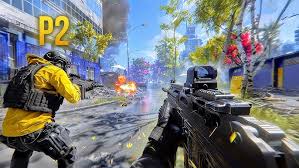Creating and Sharing Your First Scratch Game: A StepbyStep Guide
Content:
Creating a Scratch game can be an exciting and rewarding experience, especially for beginners in programming. Whether youre a student, a teacher, or simply someone interested in learning how to code, Scratch offers a userfriendly platform to bring your ideas to life. But where do you start? What questions should you ask yourself before diving in? Let’s explore some common queries and provide valuable insights to help you create and share your first Scratch game.
1. What is Scratch, and Why Should I Use It to Create a Game?
Scratch is a visual programming language developed by MIT, designed to help beginners learn coding concepts through interactive projects. It uses a blockbased interface, making it accessible for people of all ages. Creating a Scratch game allows you to develop essential skills like logic, problemsolving, and creativity while having fun. Plus, the ability to share your game with a global community adds an extra layer of motivation!
2. How Do I Choose a Game Idea for My Scratch Game?
nstorming. Ask yourself:
What type of game do I enjoy playing? (e.g., platformer, puzzle, adventure)
What skills do I want to practice? (e.g., movement, collision detection, storytelling)
Who is my target audience? (e.g., kids, friends, classmates)
Simple ideas like a cat and mouse chase or a space shooter often work well for beginners. Keep it manageable—don’t try to create a complex game on your first try!
3. What Are the Basic Steps to Create a Scratch Game?
Once you have an idea, follow these steps:
1. Set Up Your Backdrop: Choose or create a background that fits your game theme.
2. Create Sprites: Add characters, objects, or enemies. For example, a player sprite and an enemy sprite.
3. Write the Code: Use Scratch blocks to control movement, interactions, and game logic.
Event Blocks: Start the game with a when green flag clicked block.

Motion Blocks: Make sprites move (e.g., move 10 steps).
Control Blocks: Use loops and conditionals (e.g., repeat until or if/then).
Sensing Blocks: Detect collisions (e.g., if touching [enemy sprite] then).
4. Test and Debug: Run your game often to fix bugs and improve gameplay.
4. How Can I Make My Scratch Game More Engaging?
To keep players interested, consider adding:
Scoring System: Track points with a variable.
Sound Effects: Add music or sound clips for actions.
Challenges: Increase difficulty by making enemies faster or adding obstacles.
Storytelling: Include dialogue or a narrative to make the game more immersive.
5. How Do I Share My Scratch Game with Others?
Sharing is a key part of the Scratch community! Here’s how:
Publish your game on the Scratch website (scratch.mit.edu).
Invite friends to play and give feedback.
Join the Scratch forums to discuss your project and learn from others.
Use social media to promote your game!
Sharing Segment:
One of the most rewarding parts of creating a Scratch game is sharing it with others. For example, my friend Alex made a pixel art runner game and posted it on Scratch. Within a week, it had over 500 plays and 100 likes! He even got comments suggesting improvements, which helped him grow as a creator. Remember, sharing isn’t just about getting attention—it’s about connecting with other learners and improving your skills through collaboration.
Conclusion
d to experiment, make mistakes, and seek inspiration from the Scratch community. Happy coding, and may your game be a hit!

